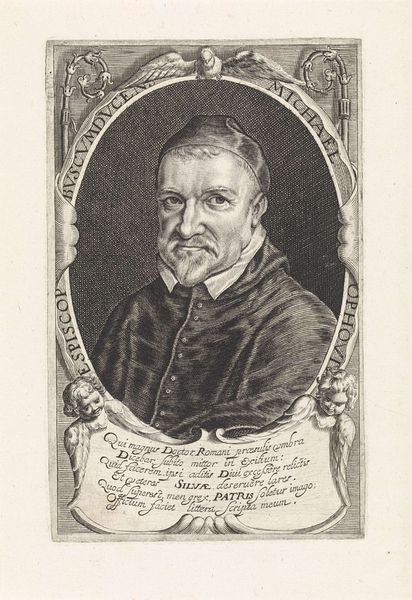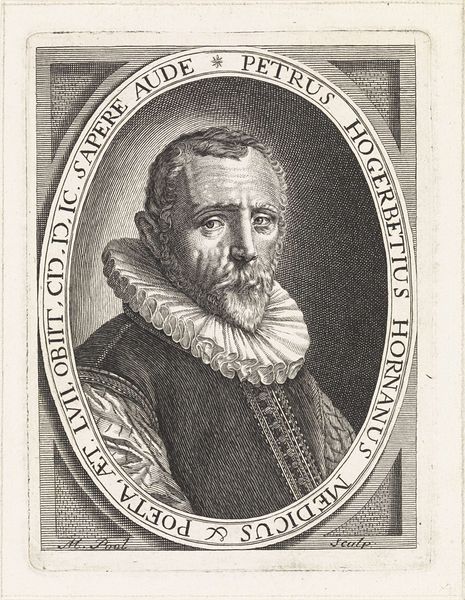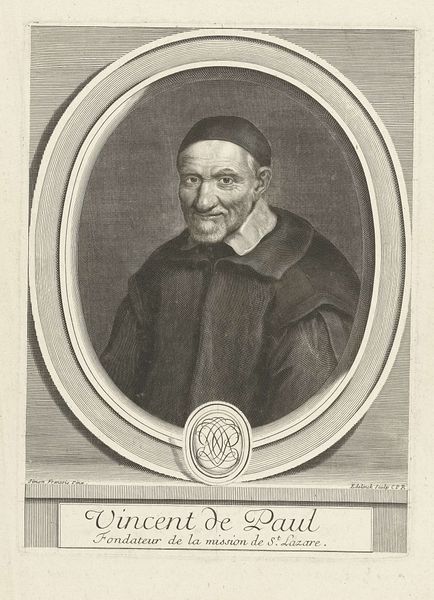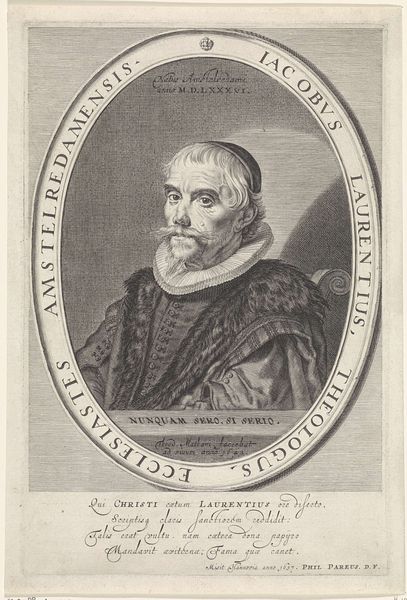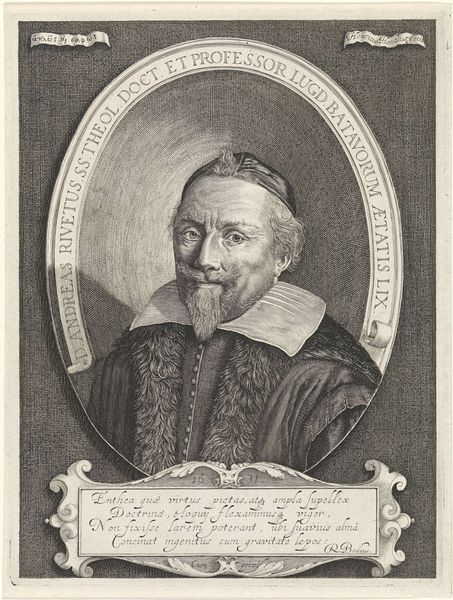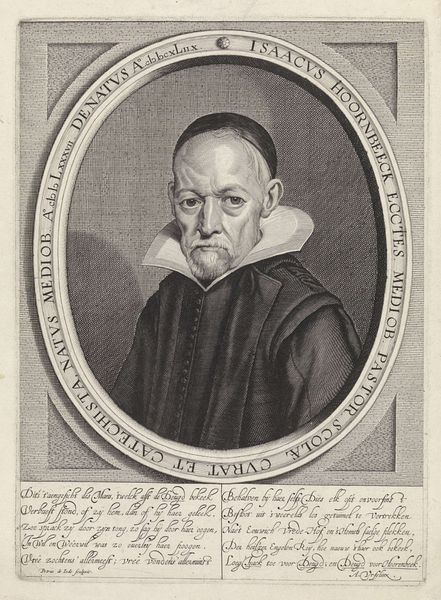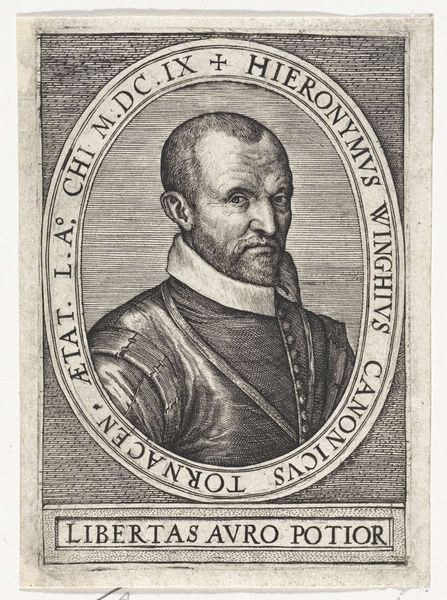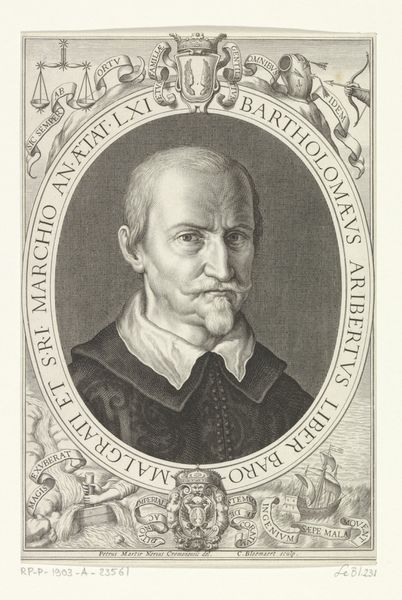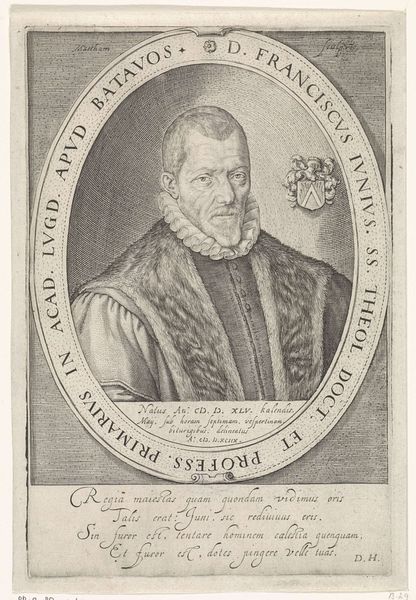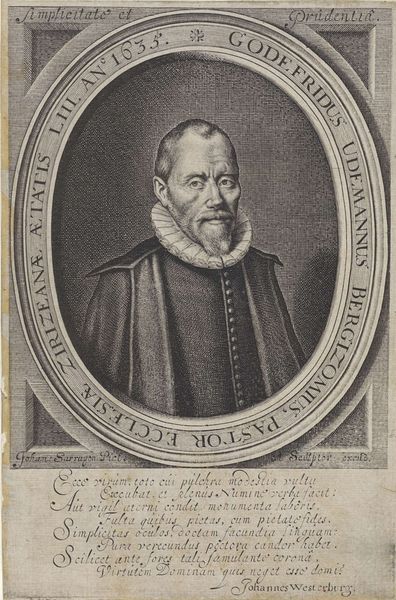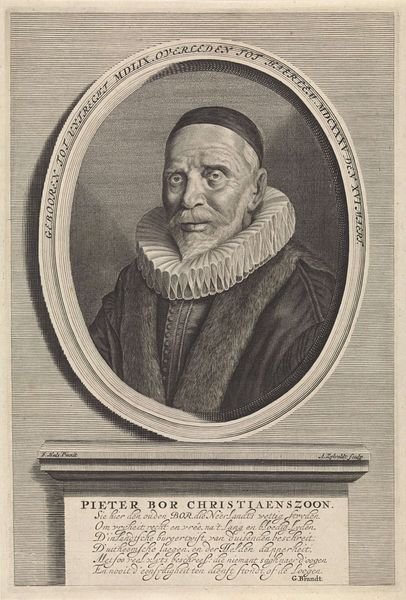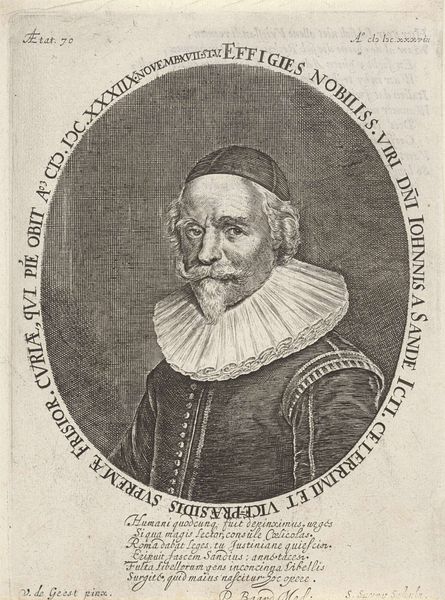
print, engraving
#
portrait
#
baroque
#
dutch-golden-age
# print
#
historical photography
#
engraving
Dimensions: height 215 mm, width 150 mm
Copyright: Rijks Museum: Open Domain
Curator: This engraving, executed between 1657 and 1675 by Jonas Suyderhoef, is titled "Portret van Jacobus Crucius." The baroque style is clear, though adapted to Dutch sensibilities. What strikes you about it initially? Editor: The precision! Look at the textures achieved through what must be incredibly skilled labor. You see it everywhere: the dense fur of the robe, the intricate calligraphy…it speaks of dedication and highly specialized craft. Curator: Indeed. Suyderhoef’s skill in capturing details – from the subject's facial expression to the folds in his clothing – is exceptional. The interplay of light and shadow creates depth and volume. I'm intrigued by the oval frame. Editor: The materials themselves would have been fairly standardized; the paper and ink wouldn’t be luxurious. The value comes from the intensive labor – each line carefully etched to create a likeness that elevated Jacobus Crucius’ status. Was there a printmaking workshop associated? Who were the hands producing this object? Curator: Those details I confess elude me, though a key stylistic marker here is the incorporation of text. Notice how phrases curve with the border, drawing attention to Crucius' roles as a “Minister” and moderator. The composition uses these symbolic elements as markers of authority. Editor: Authority, yes, but authority earned through hours of skilled, physical labor—both Suyderhoef's and presumably many others involved in producing editions of this portrait. Consider too the social capital represented. Curator: How so? Editor: Think about access. Access to training, to the tools of engraving, to a patron like Crucius. The image presents more than simple piety. Curator: A good point; the level of resolution creates that impact and hints at wider narratives of production and patronage, certainly enriching our understanding of this Dutch Golden Age portrait. It demonstrates how even an image with one primary subject branches off into areas concerning skilled makers, commercial ecosystems, and symbolic power. Editor: Exactly. And perhaps even reveals to modern audiences how value is produced and allocated in these older economies of art, labor, and class.
Comments
No comments
Be the first to comment and join the conversation on the ultimate creative platform.
